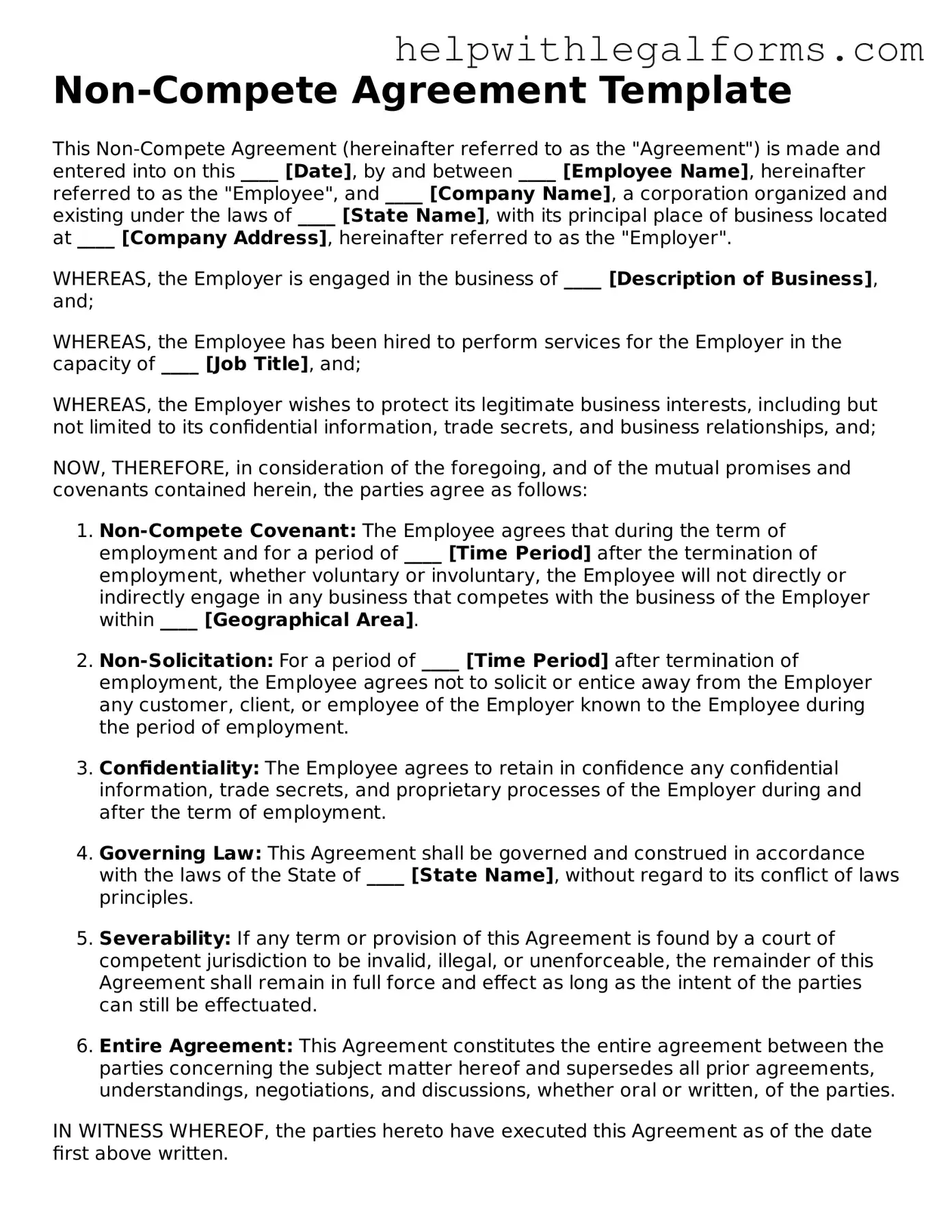Non-Compete Agreement Template
This Non-Compete Agreement (hereinafter referred to as the "Agreement") is made and entered into on this ____ [Date], by and between ____ [Employee Name], hereinafter referred to as the "Employee", and ____ [Company Name], a corporation organized and existing under the laws of ____ [State Name], with its principal place of business located at ____ [Company Address], hereinafter referred to as the "Employer".
WHEREAS, the Employer is engaged in the business of ____ [Description of Business], and;
WHEREAS, the Employee has been hired to perform services for the Employer in the capacity of ____ [Job Title], and;
WHEREAS, the Employer wishes to protect its legitimate business interests, including but not limited to its confidential information, trade secrets, and business relationships, and;
NOW, THEREFORE, in consideration of the foregoing, and of the mutual promises and covenants contained herein, the parties agree as follows:
Non-Compete Covenant: The Employee agrees that during the term of employment and for a period of ____ [Time Period] after the termination of employment, whether voluntary or involuntary, the Employee will not directly or indirectly engage in any business that competes with the business of the Employer within ____ [Geographical Area].
Non-Solicitation: For a period of ____ [Time Period] after termination of employment, the Employee agrees not to solicit or entice away from the Employer any customer, client, or employee of the Employer known to the Employee during the period of employment.
Confidentiality: The Employee agrees to retain in confidence any confidential information, trade secrets, and proprietary processes of the Employer during and after the term of employment.
Governing Law: This Agreement shall be governed and construed in accordance with the laws of the State of ____ [State Name], without regard to its conflict of laws principles.
Severability: If any term or provision of this Agreement is found by a court of competent jurisdiction to be invalid, illegal, or unenforceable, the remainder of this Agreement shall remain in full force and effect as long as the intent of the parties can still be effectuated.
Entire Agreement: This Agreement constitutes the entire agreement between the parties concerning the subject matter hereof and supersedes all prior agreements, understandings, negotiations, and discussions, whether oral or written, of the parties.
IN WITNESS WHEREOF, the parties hereto have executed this Agreement as of the date first above written.
EMPLOYEE: ___________________________
EMPLOYER: ___________________________ (Authorized Signature)
EMPLOYER: ___________________________ (Print Name and Title)
